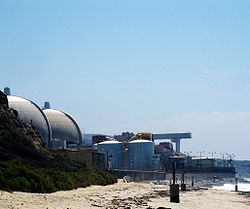LA council attack on San Onofre might bring blackouts to Orange County, San Diego
By Joseph Perkins
After giving a speech in which he refused to bail out New York City from impending bankruptcy, Gerald Ford prompted the famously pithy headline in the New York Daily News: FORD TO CITY: DROP DEAD.
The Los Angeles City Council this week did not exactly tell San Diego and Orange County to drop dead, but it did send them a message that LA is perfectly sanguine with the prospect that the state’s second- and third-largest counties spend the upcoming summer in the dark.
In a unanimous vote, the 15-member council passed a resolution urging federal regulators not to allow the San Onofre Nuclear Generating Station to restart either of its two reactors, both of which have been offline since January 2012, owing to premature wear on steam generator tubes.
Essentially, the council wants the U.S. Nuclear Regulatory Commission to reverse its finding earlier this month that allowing Southern California Edison to fire up one of the nuclear plant’s reactors would pose no threat to public safety. SCE has a 78 percent ownership stake in San Onofre, San Diego Gas & Electric 20 percent and the city of Riverside 2 percent.
The council is following the advice of S. David Freeman, a former head of the Los Angeles Department of Water, who is now a “consultant” with the extremist environmental group Friends of the Earth, which is crusading to permanently shutter San Onofre.
Freeman and anti-nuke Friends demand that the NRC require Edison to obtain a full-blown license amendment to restart San Onofre. That may sound reasonable, but it entails courtroom-like proceedings at which Edison would be on public trial.
All Edison wants to do is get San Onofre operating at reduced capacity by this upcoming summer, the peak season for electricity demand in the Southern California region.
When San Onofre is operating at full capacity, it accounts for a fifth of the electricity both Edison and San Diego Gas & Electric deliver to their business and residential customers.
Rolling blackouts
Now, if L.A. businesses and residences faced the prospect of a summer with 20 percent less electricity than normal, and the resultant possibility of rolling blackouts, there’s no way the City Council would urge that San Onofre remain idle.
But because San Onofre generally doesn’t supply atoms to the L.A. Department of Water and Power, the City Council felt free to dump on the nuclear plant, no matter the consequence to Edison’s Orange County customers and SDG&E’s San Diego County customers.
In fact, a report last month by the California Independent System Operator (CaISO), which oversees the electrical grid for 80 percent of the state, warns that the combination of the continued shutdown of San Onofre and the significant drought-related reduction of hydroelectric generation — which helped replace the nuclear plant’s electrons last summer — could cause “Enron-style” power shortages this summer.
While the power shortages would affect all of Southern California, they would fall hardest on southern Orange County and San Diego County.
That suits the L.A. City Council just fine. After all, who cares if the bumpkins to the South have to deal with rolling blackouts this summer?
Related Articles
Study questions whether fracking causes earthquakes
essay writing online A new 2013 study conducted by the University of Durham in the United Kingdom dispels the
Dems Will Reward Union Friends
OCT. 29, 2010 . Demonstrative of just how raunchy and fierce politics have gotten in America, just last week President
CA Confused on "Drought" Meaning
MARCH 7, 2011 BY WAYNE LUSVARDI California’s drought barometer and vocabulary need to be reformed. The bureaucratic apparatus in California




